Hinduism Is a Splendrous Lotus with Four Superb Petals
For over 200 years, Western scholars have struggled to understand Hinduism, a faith whose followers seemed (to outsiders) to arbitrarily worship any one of a dozen Gods as the Supreme, a religion vastly diverse in its beliefs, practices and ways of worship. Some Indologists labeled the Hinduism they encountered polytheistic; others even coined new terms, like henotheism, to describe this baffling array of spiritual traditions. Few, however, have realized, and fewer still have written, that India’s Sanatana Dharma, or “eternal faith,” known today as Hinduism and comprising over a billion followers, is a family of religions with four principal denominations—Saivism, Shaktism, Vaishnavism and Smartism. This single perception is essential for understanding Hinduisim and explaining it accurately to others. Contrary to prevailing misconceptions, Hindus all worship a one Supreme Being, though by different names. For Vaishnavites, Lord Vishnu is God. For Saivites, God is Siva. For Shaktas, Goddess Shakti is supreme. For Smartas, liberal Hindus, the choice of Deity is left to the devotee. Each has a multitude of guru lineages, religious leaders, priesthoods, sacred literature, monastic communities, schools, pilgrimage centers and tens of thousands of temples. They possess a wealth of art and architecture, philosophy and scholarship. These four sects hold such divergent beliefs that each is a complete and independent religion. Yet, they share a vast heritage of culture and belief—karma, dharma reincarnation, all-pervasive Divinity, temple worship, sacraments, manifold Deities, the guru-disciple tradition and the Vedas as scriptural authority. In this fourteen-page Insight, drawn from Satguru Sivaya Subramuniyaswami’s Dancing with Siva, we offer a synopsis of these four denominations, followed by a point-by-point comparison.
Each of Hinduism’s philosophies, schools and lineages shares a common purpose: to further the soul’s unfoldment to its divine destiny. Nowhere is this process better represented than in the growth of the renowned lotus, which, seeking the sun, arises from the mud to become a magnificent flower. Its blossom is a promise of purity and perfection.
Saivism
Saivite Hindus worship the Supreme God as Siva, the Compassionate One. Saivites esteem self- discipline and philosophy and follow a satguru. They worship in the temple and practice yoga, striving to be one with Siva within.
Shaktism
Shaktas worship the Supreme as the Divine Mother, Shakti or Devi. She has many forms. Some are gentle, some are fierce. Shaktas use chants, real magic, holy diagrams, yoga and rituals to call forth cosmic forces and awaken the great kundalini power within the spine.
Vaishnavism
Vaishnavites worship the Supreme as Lord Vishnu and His incarnations, especially Krishna and Rama. Vaishnavites are mainly dualistic. They are deeply devotional. Their religion is rich in saints, temples and scriptures.
Smartism
Smartas worship the Supreme in one of six forms: Ganesha, Siva, Shakti, Vishnu, Surya and Skanda. Because they accept all the major Hindu Gods, they are known as liberal or nonsectarian. They follow a philosophical, meditative path, emphasizing man’s oneness with God through understanding.
What Is the Deeply Mystical Saiva Sect?
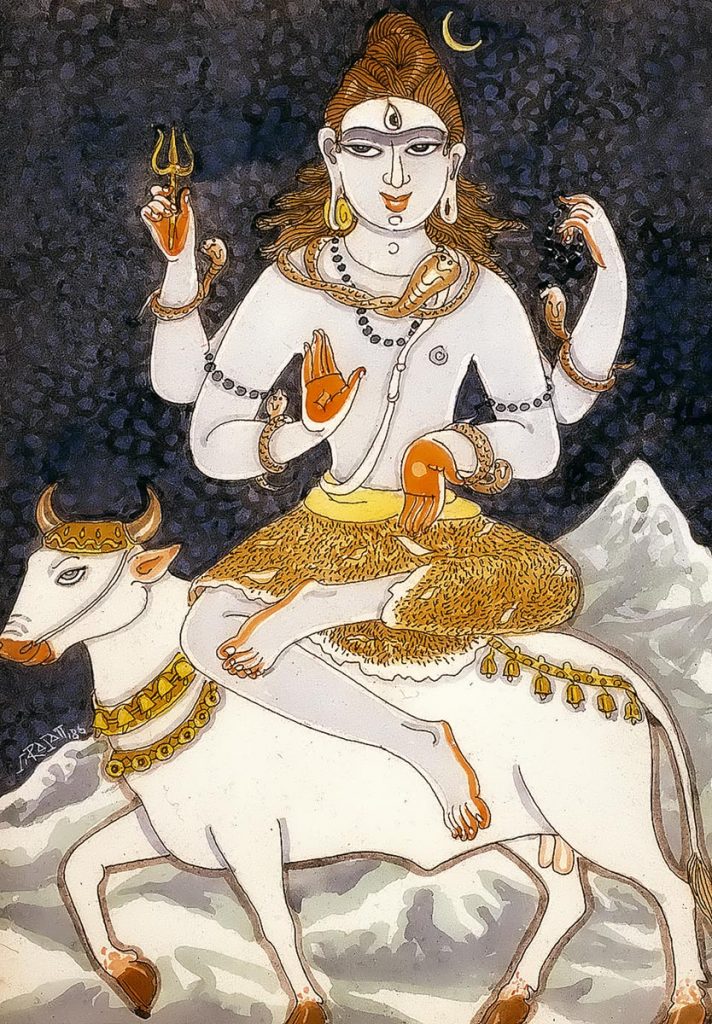
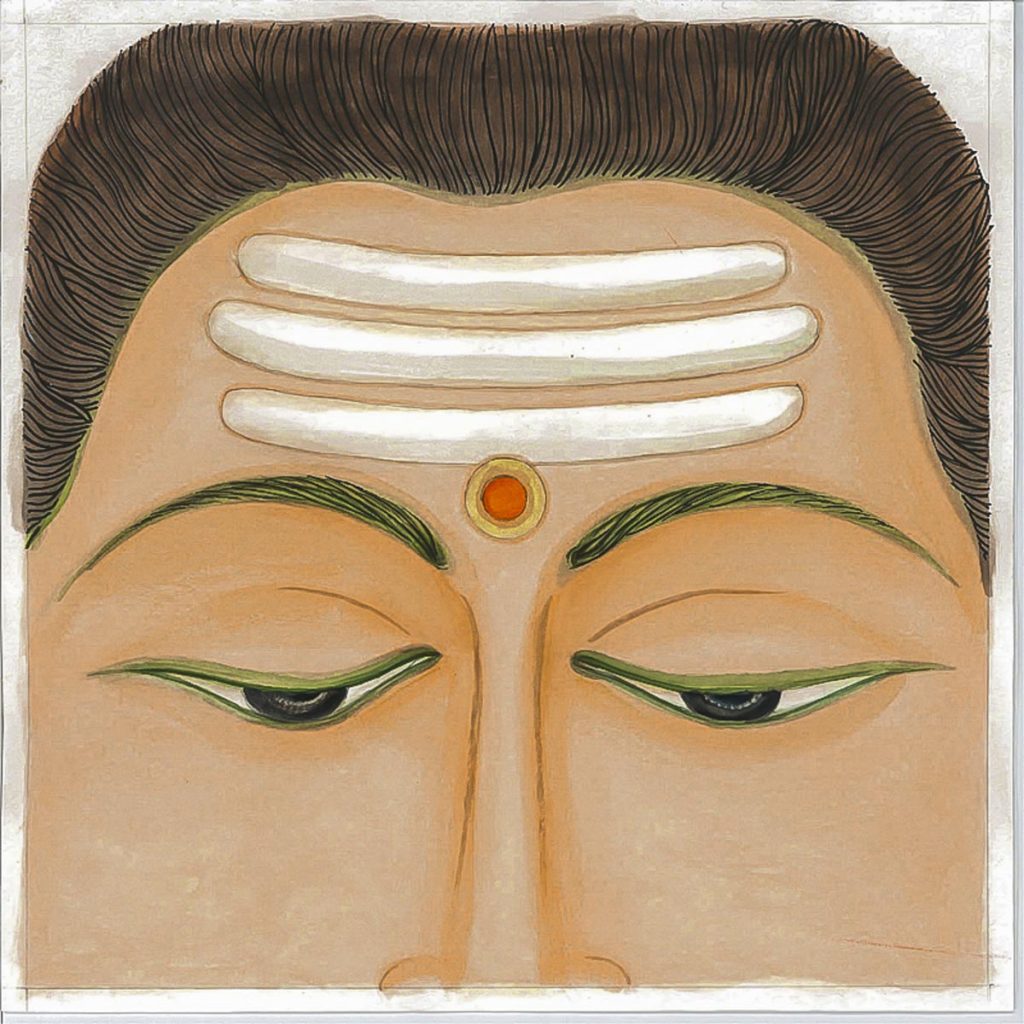
Saivism is the world’s oldest religion. Worshiping God Siva, the compassionate One, it stresses potent disciplines, high philosophy, the guru’s centrality and bhakti-raja-siddha yoga leading to oneness with Siva within. Aum.
Saivism is ancient, truly ageless, for it has no beginning. It is the precursor of the many-faceted religion now termed Hinduism. Scholars trace the roots of Siva worship back more than 8,000 years to the advanced Indus Valley civilization. But sacred writings tell us there never was a time when Saivism did not exist. Modern history records six main schools: Saiva Siddhanta, Pashupatism, Kashmir Saivism, Vira Saivism, Siddha Siddhanta and Siva Advaita. Saivism’s grandeur and beauty are found in a practical culture, an enlightened view of man’s place in the universe and a profound system of temple mysticism and siddha yoga. It provides knowledge of man’s evolution from God and back to God, of the soul’s unfoldment and awakening guided by enlightened sages. Like all the sects, its majority are devout families, headed by hundreds of orders of swamis and sadhus who follow the fiery, world-renouncing path to moksha. The Vedas state, “By knowing Siva, the Auspicious One who is hidden in all things, exceedingly fine, like film arising from clarified butter, the One embracer of the universe by realizing God, one is released from all fetters.” Aum Namah Sivaya.
What Is the Magic and Power Of Shaktism?
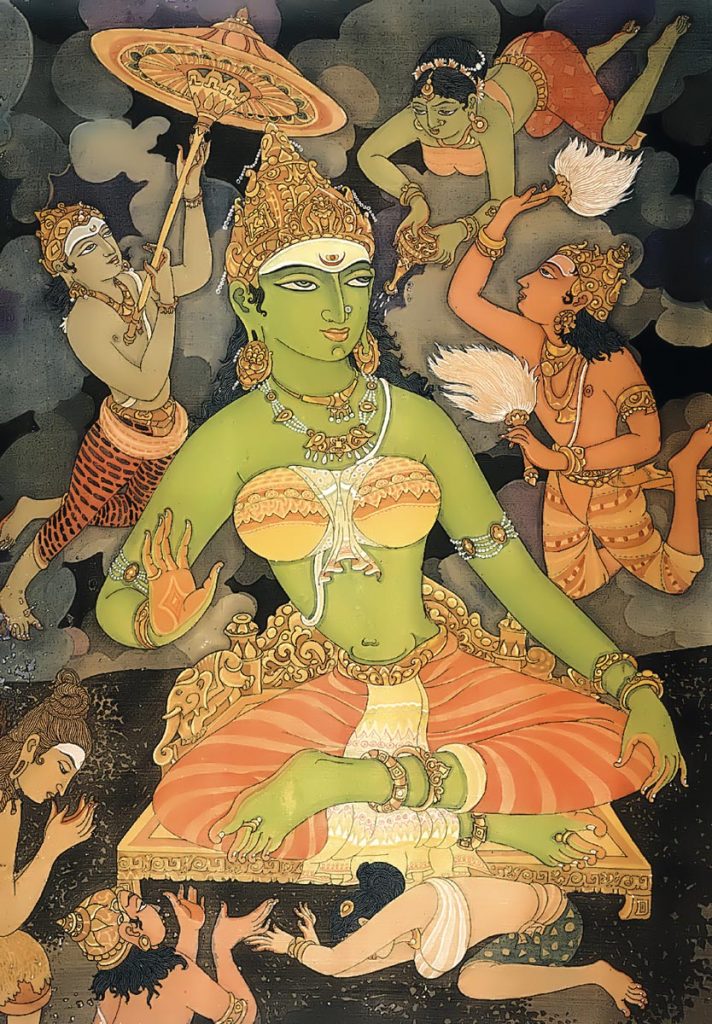
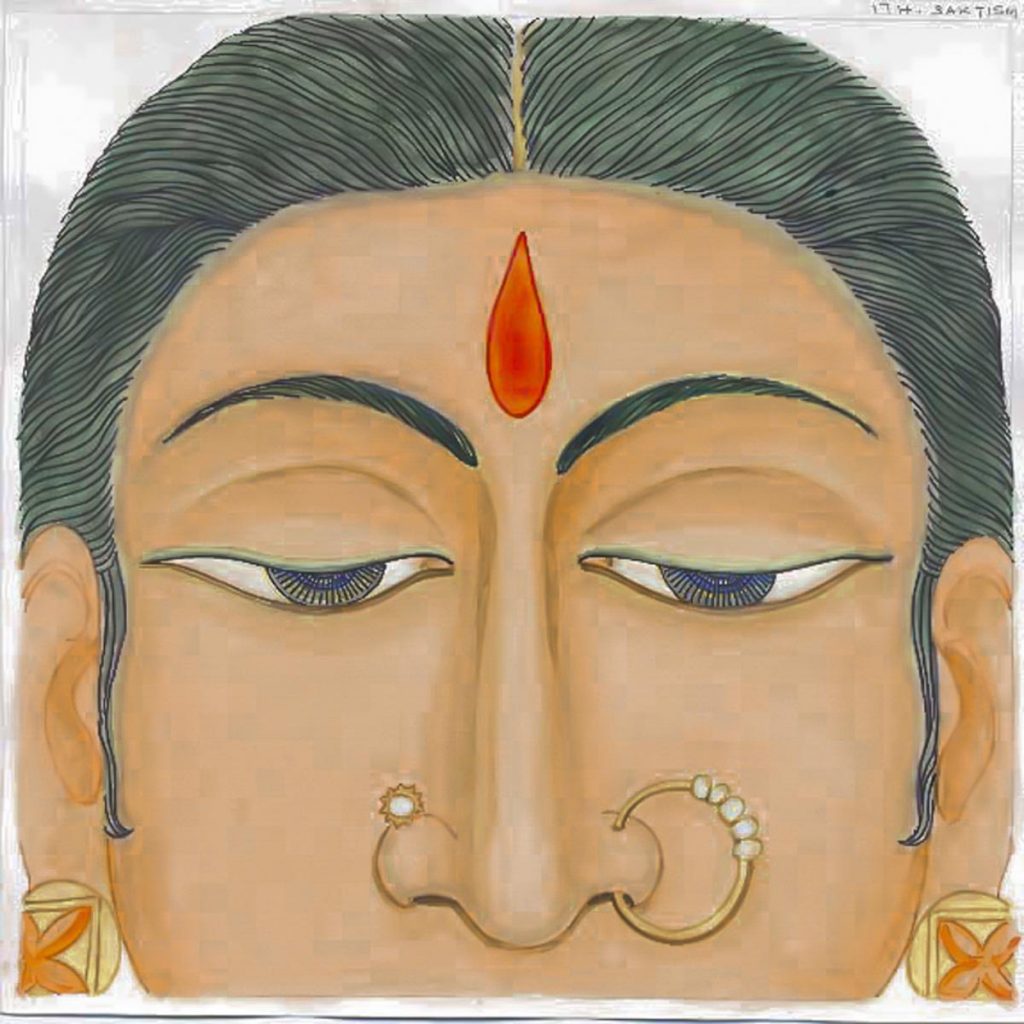
Shaktism reveres the Supreme as the Divine Mother, Shakti or Devi, in Her many forms, both gentle and fierce. Shaktas use mantra, tantra, yantra, yoga and puja to invoke cosmic forces and awaken the kundalini power. Aum.
While worship of the divine mother extends beyond the pale of history, Shakta Hinduism arose as an organized sect in India around the fifth century. Today it has four expressions devotional, folk-shamanic, yogic and universalist all invoking the fierce power of Kali or Durga, or the benign grace of Parvati or Ambika. Shakta devotionalists use puja rites, especially to the Shri Chakra yantra, to establish intimacy with the Goddess. Shamanic Shaktism employs magic, trance mediumship, firewalking and animal sacrifice for healing, fertility, prophecy and power. Shakta yogis seek to awaken the sleeping Goddess Kundalini and unite her with Siva in the sahasrara chakra. Shakta universalists follow the reformed Vedantic tradition exemplified by Sri Ramakrishna. “Left-hand ” tantric rites transcend traditional ethical codes. Shaktism is chiefly advaitic, defining the soul’s destiny as complete identity with the Unmanifest, Siva. Central scriptures are the Vedas, Shakta Agamas and Puranas. The Devi Gita extols, “We bow down to the universal soul of all. Above and below and in all four directions, Mother of the universe, we bow.” Aum Chandikayai Namah.
What Is the Devotional Vaishnava Sect?


Vaishnavism is an ancient Hindu sect centering on the worship of Lord Vishnu and His incarnations, especially Krishna and Rama. Largely dualistic, profoundly devotional, it is rich in saints, temples and scriptures. Aum.
The worship of Vishnu, meaning “pervader, ” dates back to Vedic times. The Pancharatra and Bhagavata sects were popular prior to 300 bce. Today’s five Vaishnava schools emerged in the middle ages, founded by Ramanuja, Madhva, Nimbarka, Vallabha and Chaitanya. Vaishnavism stresses prapatti, single-pointed surrender to Vishnu, or His ten or more incarnations, called avataras. Japa is a key devotional sadhana, as is ecstatic chanting and dancing, called kirtana. Temple worship and festivals are elaborately observed. Philosophically, Vaishnavism ranges from Madhva’s pure dualism to Ramanuja’s qualified nondualism to Vallabha’s nearly monistic vision. God and soul are everlastingly distinct. The soul’s destiny, through God’s grace, is to eternally worship and enjoy Him. While generally nonascetic, advocating bhakti as the highest path, Vaishnavism has a strong monastic community. Central scriptures are the Vedas, Vaishnava Agamas, Itihasas and Puranas. The Bhagavad Gita states, “On those who meditate on Me and worship with undivided heart, I confer attainment of what they have not, and preserve what they have.” Aum Namo Narayanaya.
What Is the Universalistic Smarta Sect?
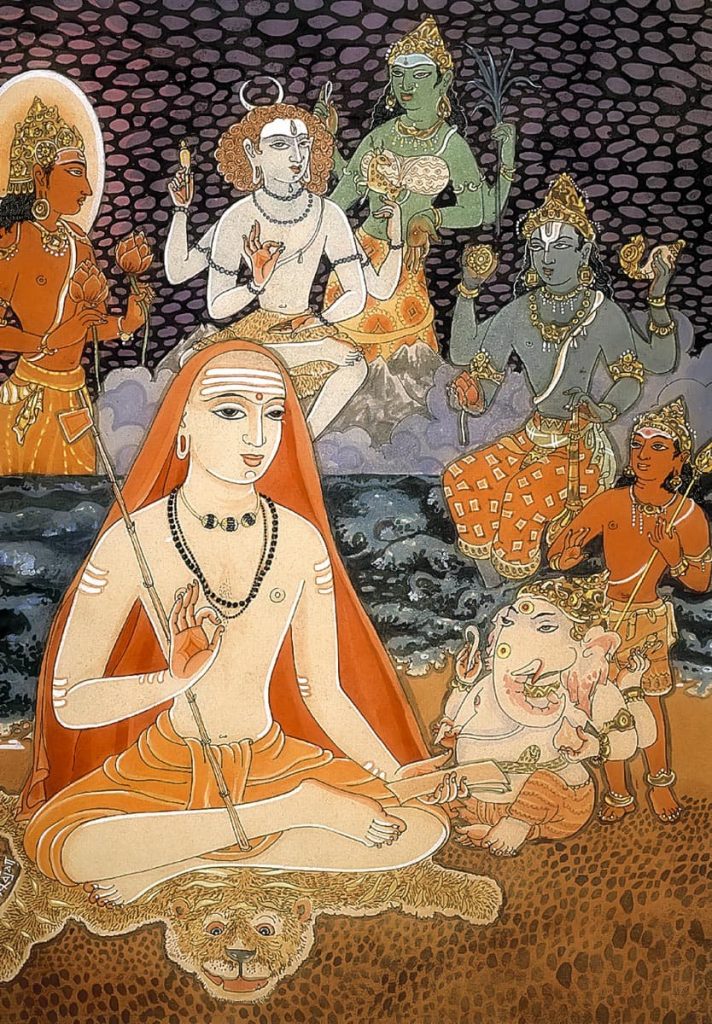

Smartism is an ancient brahminical tradition reformed by Shankara in the ninth century. Worshiping six forms of God, this liberal Hindu path is monistic, nonsectarian, meditative and philosophical. Aum.
Smarta means a follower of classical smriti, particularly the Dharma Shastras, Puranas and Itihasas. Smartas revere the Vedas and honor the Agamas. Today this faith is synonymous with the teachings of Adi Shankara, the monk-philosopher known as shanmata sthapanacharya, “founder of the six-sect system.” He campaigned India-wide to consolidate the Hindu faiths of his time under the banner of Advaita Vedanta. To unify the worship, he popularized the ancient Smarta five-Deity altar Ganapati, Surya, Vishnu, Siva and Shakti and added Kumara. From these, devotees may choose their “preferred Deity, ” or Ishta Devata. Each God is but a reflection of the one Saguna Brahman. Shankara organized hundreds of monasteries into a ten-order, dashanami system, which now has five pontifical centers. He wrote profuse commentaries on the Upanishads, Brahma Sutras and Bhagavad Gita. Sankara proclaimed, “It is the one Reality which appears to our ignorance as a manifold universe of names and forms and changes. Like the gold of which many ornaments are made, it remains in itself unchanged. Such is Brahman, and That art Thou.” Aum Namah Sivaya.
Comparing the Four Major Denominations
As just seen, the spectrum of Hindu religiousness is found within four major sects or denominations: Saivism, Shaktism, Vaishnavism and Smartism. Among these four streams, there are certainly more similarities than differences. All four believe in karma and reincarnation and in a Supreme Being who is both form and pervades form, who creates, sustains and destroys the universe only to create it again in unending cycles. They strongly declare the validity and importance of temple worship, in the three worlds of existence and the myriad Gods and devas residing in them. They concur that there is no intrinsic evil, that the cosmos is created out of God and is permeated by Him. They each believe in maya (though their definitions differ somewhat), and in the liberation of the soul from rebirth, called moksha, as the goal of human existence. They believe in dharma and in ahimsa, noninjury, and in the need for a satguru to lead the soul toward Self Realization. They wear the sacred marks, tilaka, on their foreheads as sacred symbols, though each wears a distinct mark. Finally, they prefer cremation of the body upon death, believing that the soul will inhabit another body in the next life. While Hinduism has many sacred scriptures, all sects ascribe the highest authority to the Vedas and Agamas, though their Agamas differ somewhat. Here, now, is a brief comparison of these four denominations.

On the Personal God/Goddess
Saivism: Personal God and temple Deity is Siva, neither male nor female. Lords Ganesha and Karttikeya are also worshiped.
Shaktism: Personal Goddess and temple Deity is Shri Devi or Shakti, female, worshiped as Rajarajeshvari, Parvati, Lakshmi, Sarasvati, Kali, Amman, etc. the Divine Mother.
Vaishnavism: Personal God and temple Deity is Vishnu, male. His incarnations as Rama and Krishna are also worshiped, as well as His divine consort, Radharani.
Smartism: Personal God and temple Deity is Ishvara, male or female, worshiped as Vishnu, Siva, Shakti, Ganesha and Surya or any Deity of devotee’s choice, e.g., Kumara or Krishna.
On the Nature of Shakti
Saivism: Shakti is God Siva’s inseparable power and manifest will, energy or mind.
Shaktism: Shakti is an active, immanent Being, separate from a quiescent and remote Siva.
Vaishnavism: No special importance is given to Shakti. However, there are parallels wherein the divine consorts are conceived as the inseparable powers of Vishnu and His incarnations: e.g., Krishna’s Radharani and Rama’s Sita.
Smartism: Shakti is a divine form of Ishvara. It is God’s manifesting power.
On the Nature of Personal God
Saivism: God Siva is pure love and compassion, immanent and transcendent, pleased by our purity and sadhana.
Shaktism: The Goddess Shakti is both compassionate and terrifying, pleasing and wrathful, assuaged by sacrifice and submission.
Vaishnavism: God Vishnu is loving and beautiful, the object of man’s devotion, pleased by our service and surrender.
Smartism: Ishvara appears as a human-like Deity according to devotees’ loving worship, which is sometimes considered a rudimentary self-purifying practice.
On the Doctrine of Avatara
Saivism: There are no divine earthly incarnations of the Supreme Being.
Shaktism: The Divine Mother does incarnate in this world.
Vaishnavism: Vishnu has ten or more incarnations.
Smartism: All Deities may assume earthly incarnations.
On the Soul and God
Saivism: God Siva is one with the soul. The soul must realize this advaitic (monistic) Truth by God Siva’s grace.
Shaktism: The Divine Mother, Shakti, is mediatrix, bestowing advaitic moksha on those who worship Her.
Vaishnavism: God and soul are eternally distinct. Through Lord Vishnu’s grace, the soul’s destiny is to worship and enjoy God.
Smartism: Ishvara and man are in reality Absolute Brahman. Within maya, the soul and Ishvara appear as two. Jnana (wisdom) dispels the illusion.
Spiritual Practice
Saivism: With bhakti as a base, emphasis is placed on sadhana, tapas (austerity) and yoga. Ascetic.
Shaktism: Emphasis is on bhakti and tantra, sometimes occult, practices. Ascetic-occult.
Vaishnavism: Emphasis is on supreme bhakti or surrender, called prapatti. Generally devotional and nonascetic.
Smartism: Preparatory sadhanas are bhakti, karma, raja yoga. The highest path is through knowledge, leading to jnana.
Major Scriptures
Saivism: Vedas, Saiva Agamas and Saiva Puranas.
Shaktism: Vedas, Shakta Agamas (Tantras) and Puranas.
Vaishnavism: Vedas, Vaishnava Agamas, Puranas and the Itihasas (Ramayana and Mahabharata, especially the Bhagavad Gita).
Smartism: Vedas, Agamas and classical smriti Puranas, Itihasas, especially the Bhagavad Gita, etc.
Regions of Influence
Saivism: Geographically widespread, strongest in South and North India, Nepal and Sri Lanka.
Shaktism: Geographically widespread, most prominent in Northeast India, especially Bengal and Assam.
Vaishnavism: Geographically widespread, especially strong throughout India, North and South.
Smartism: Geographically widespread, most prominent in North and South India.
Paths of Attainment
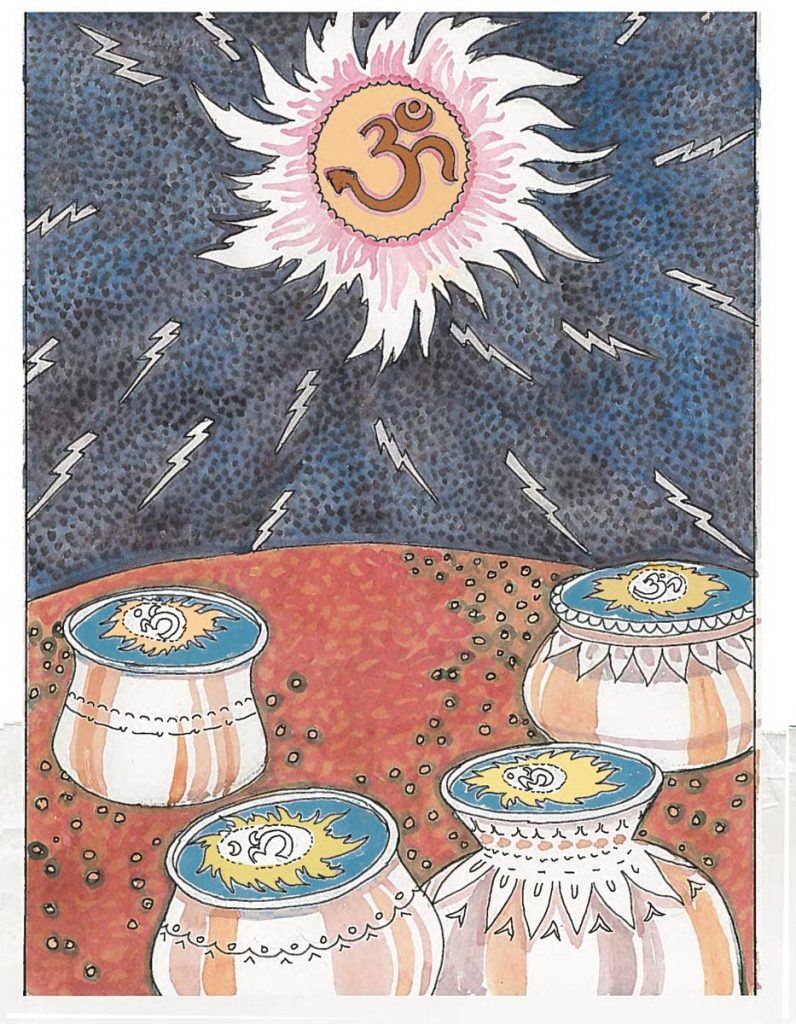

Saivism: The path for Saivites is divided into four progressive stages of belief and practice called charya, kriya, yoga and jnana. The soul evolves through karma and reincarnation from the instinctive-intellectual sphere into virtuous and moral living, then into temple worship and devotion, followed by internalized worship, or yoga, and its meditative disciplines. Union with God Siva comes through the grace of the satguru and culminates in the soul’s maturity in the state of jnana, or wisdom. Saivism values both bhakti and yoga, devotional and contemplative sadhanas, or disciplines.
Shaktism: The spiritual practices in Shaktism are similar to those in Saivism, though there is more emphasis in Saktism on God’s Power as opposed to Being, on mantras and yantras, and on embracing apparent opposites: male-female, absolute-relative, pleasure-pain, cause-effect, mind-body. Certain sects within Shaktism undertake “left-hand ” tantric rites, consciously using the world of form to transmute and eventually transcend that world. The “left-hand ” approach is somewhat occult in nature; it is considered a path for the few, not the many. The “right-hand ” path is more conservative in nature.
Vaishnavism: Most Vaishnavites believe that religion is the performance of bhakti sadhanas, devotional disciplines, and that man can communicate with and receive the grace of the Gods and Goddesses through the darshan (sight) of their icons. The paths of karma yoga and jnana yoga lead to bhakti yoga. Among the foremost practices of Vaishnavites is chanting the holy names of the Avataras, Vishnu’s incarnations, especially Rama and Krishna. Through total self-surrender, prapatti, to Vishnu, to Krishna or to His beloved consort Radharani, liberation from samsara (the cycle of reincarnation) is attained.
Smartism: Smartas, the most eclectic of Hindus, believe that moksha is achieved through jnana yoga alone defined as an intellectual and meditative but non-kundalini-yoga path. Jnana yoga’s progressive stages are scriptural study (shravana), reflection (manana) and sustained meditation (dhyana). Guided by a realized guru and avowed to the unreality of the world, the initiate meditates on himself as Brahman, Absolute Reality, to break through the illusion of maya. Devotees may also choose from three other non-successive paths to cultivate devotion, accrue good karma and purify the mind. These are bhakti yoga, karma yoga and raja yoga, which certain Smartas teach can also bring enlightenment.
From Our Hindu Lexicon

Śaivism (Śaiva): शैव The religion followed by those who worship Siva as supreme God. Oldest of the four sects of Hinduism. The earliest historical evidence of Saivism is from the 8,000-year-old Indus Valley civilization in the form of the famous seal of Siva as Lord Pashupati, seated in a yogic pose. In the Ramayana, dated astronomically at 2000 BCE, Lord Rama worshiped Siva, as did his rival Ravana. Buddha in 624 BCE was born into a Saivite family, and records of his time speak of the Saiva ascetics who wandered the hills looking much as they do today. There are many schools of Saivism, six of which are Saiva Siddhanta, Pashupata Saivism, Kashmir Saivism, Vira Saivism, Siddha Siddhanta and Siva Advaita. They are based firmly on the Vedas and Saiva Agamas, and thus have much in common, including the following principal doctrines: 1) the five powers of Siva—creation, preservation, destruction, revealing and concealing grace; 2) The three categories: Pati, pashu and pasha (“God, souls and bonds”); 3) the three bonds: anava, karma and maya; 4) the threefold power of Siva: icchha shakti, kriya shakti and jnana shakti; 5) the thirty-six tattvas, or categories of existence; 6) the need for initiation from a satguru; 7) the power of mantra; 8) the four padas (stages): charya (selfless service), kriya (devotion), yoga (meditation), and jnana (illumination); 9) the belief in the Panchakshara as the foremost mantra, and in rudraksha and vibhuti as sacred aids to faith; 10) the beliefs in satguru (preceptor), Sivalinga (object of worship) and sangama (company of holy persons).
Śāktism (Śākta): शाक्त “Doctrine of power.” The religion followed by those who worship the Supreme as the Divine Mother—Shakti or Devi—in Her many forms, both gentle and fierce. Shaktism is one of the four primary sects of Hinduism. Shaktism’s first historical signs are thousands of female statuettes dated ca 5500 BCE recovered at the Mehrgarh village in India. In philosophy and practice, Shaktism greatly resembles Saivism, both faiths promulgating, for example, the same ultimate goals of advaitic union with Siva and moksha. But Shaktas worship Shakti as the Supreme Being exclusively, as the dynamic aspect of Divinity, while Siva is considered solely transcendent and is not worshiped. There are many forms of Shaktism, with endless varieties of practices which seek to capture divine energy or power for spiritual transformation. Geographically, Shaktism has two main forms, the Shrikula “family of the Goddess Shri (or Lakshmi),” which respects the brahminical tradition (a mainstream Hindu tradition which respects caste and purity rules) and is strongest in South India; and the Kalikula, “family of Kali,” which rejects brahminical tradition and prevails in Northern and Eastern India. Four major expressions of Shaktism are evident today: folk-shamanism, yoga, devotionalism and universalism. Among the eminent mantras of Shaktism is: Aum Hrim Chandikayai Namah, “I bow to Her who tears apart all dualities.” There are many varieties of folk Shaktism gravitating around various forms of the Goddess, such as Kali, Durga and a number of forms of Amman. Such worship often involves animal sacrifice and fire-walking, though the former is tending to disappear.
Vaishṇavism (Vaishṇava): वैष्णव One of the four major religions, or denominations of Hinduism, representing roughly half of the world’s one billion Hindus. It gravitates around the worship of Lord Vishnu as Personal God, His incarnations and their consorts. The doctrine of avatara (He who descends), especially important to Vaishnavism, teaches that whenever adharma gains ascendency in the world, God takes a human birth to reestablish “the way.” There are either 10, 22 or 34 avataras of Vishnu, according to various scriptures. The most renowned avataras were Rama and Krishna. The last to come will be Kalki, the harbinger of a golden age on Earth. Vaishnavism stresses the personal aspect of God over the impersonal, and bhakti (devotion) as the true path to salvation. The goal of Vaishnavism is the attainment of mukti, defined as blissful union with God’s body, the loving recognition that the soul is a part of Him, and eternal nearness to Him in Vaikuntha, heaven. Foremost among Vaishnava scriptures are the Vaishnava Agamas, Bhagavad Gita and Bhagavata Purana. Among the earliest schools were the Pancharatras and the Bhagavatas. The five major contemporary schools (founded between 1000 and 1500) are those of Ramanuja (Shri Vaishnavism), Madhva, Nimbarka, Vallabha and Chaitanya. Philosophically they range from Madhva’s pure dualism to Vallabha’s lofty monistic vision.
Smartism: स्मार्त Sect based on the secondary scriptures (smriti). The most liberal of the four major Hindu denominations, an ancient Vedic brahminical tradition (ca 700 BCE) which from the 9th century onward was guided and deeply influenced by the Advaita Vedanta teachings of the reformist Adi Sankara. Its adherents rely mainly on the classical smriti literature, especially the Itihasas (Ramayana and Mahabharata, the latter of which includes the Bhagavad Gita), Puranas and Dharma Shastras. These are regarded as complementary to and a means to understanding the Vedas. Smartas adhere to Sankara’s view that all Gods are but various representations of Saguna Brahman. Thus, Smartas are avowedly eclectic, worshiping all the Gods and discouraging sectarianism. The Smarta system of worship, called panchayatana puja, reinforces this outlook by including the major Deity of each primary Hindu sect of ancient days: Ganesha, Surya, Vishnu, Siva and Shakti. To encompass a sixth important lineage, Sankara recommended the addition of a sixth Deity, Kumara. Thus he was proclaimed shanmata sthapanacharya, founder of the sixfold system. One among the six is generally chosen as the devotee’s preferred Deity, Ishta Devata. For spiritual authority, Smartas look to the regional monasteries established across India by Sankara, and to their pontiffs. These are the headquarters of ten orders of renunciate monks who spread the Advaita Vedanta teachings far and wide. Within Smartism three primary religious approaches are distinguished: ritualistic, devotional and philosophical.
Other Denominations
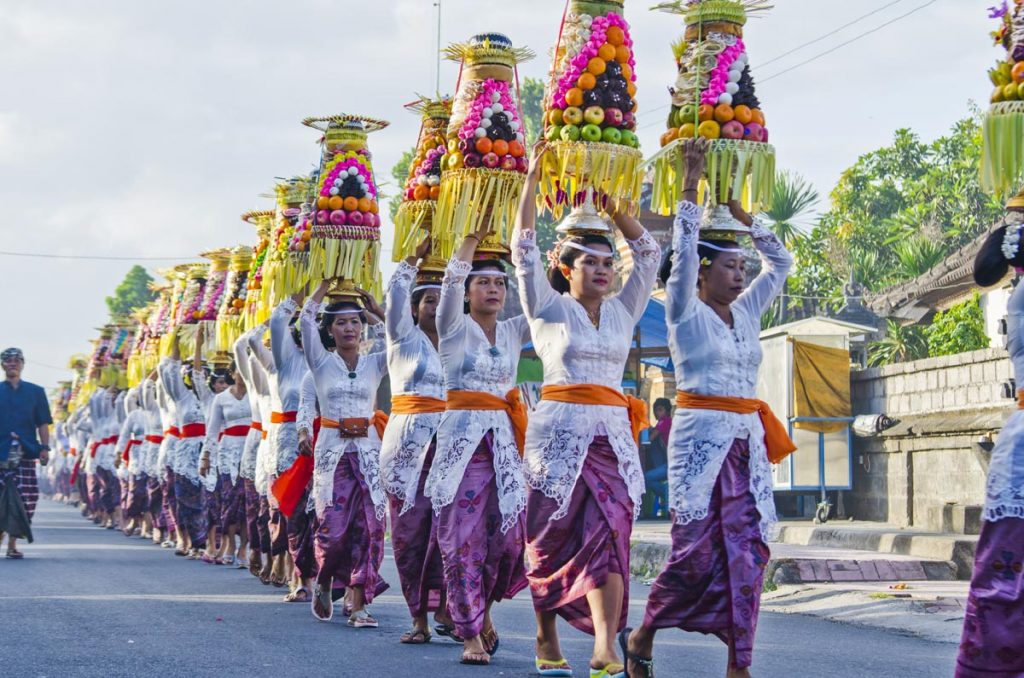
Hinduism is vast and varied. It has been said that it is best understood not as a religion, but as ten thousand religions gathered under a single umbrella. Below are but a few of the many peripheral faiths and followings that make up Sanatana Dharma.
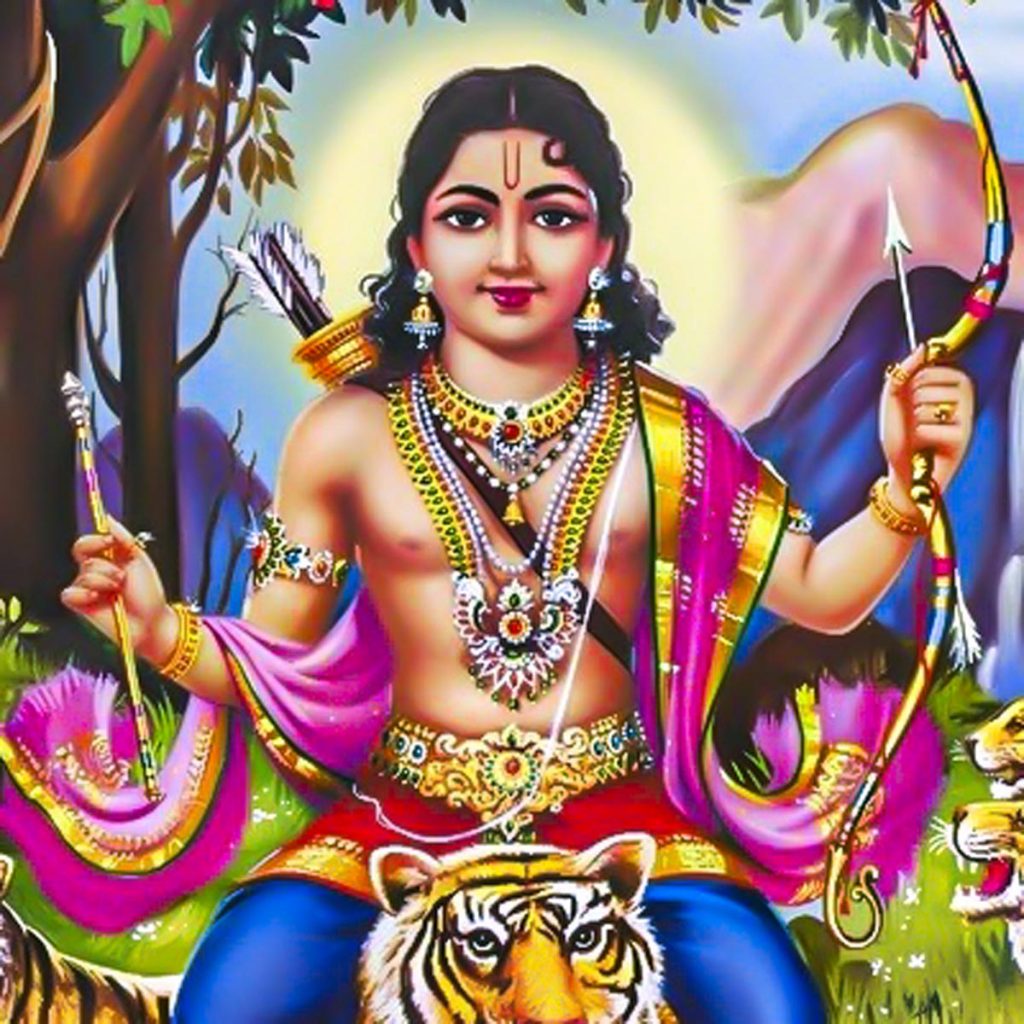
Ayyappanism: Ayyappan (also known as Shasta, Dharmasastha or Manikandan) is the God of self-control, courage and strength, riding on a wild tiger. His origin is depicted in different ways across various regions but it’s commonly said He is the son of Siva and Mohini. Popular almost exclusively in South India, worshipers of Ayyappan can be found in Kerala, Tamil Nadu and Karnataka. A central practice of the tradition is an annual 41-day pilgrimage to His primary temple, Sabarimala, during which celibacy, teetotalism and vegetarianism must be strictly observed—a fitting tapas for devotees of the Lord of self-control.
Ganapatism: This stream of Hinduism is wildly popular in Maharashtra, where followers of Ganapati go beyond the universal reverence Hindus have for Ganesha as the elephant-headed Lord of Obstacles and declare Him to be the Supreme Being. Ardent acolytes distinguish themselves by a red circle on their forehead, as well as the tattoo of an elephant on their shoulder.
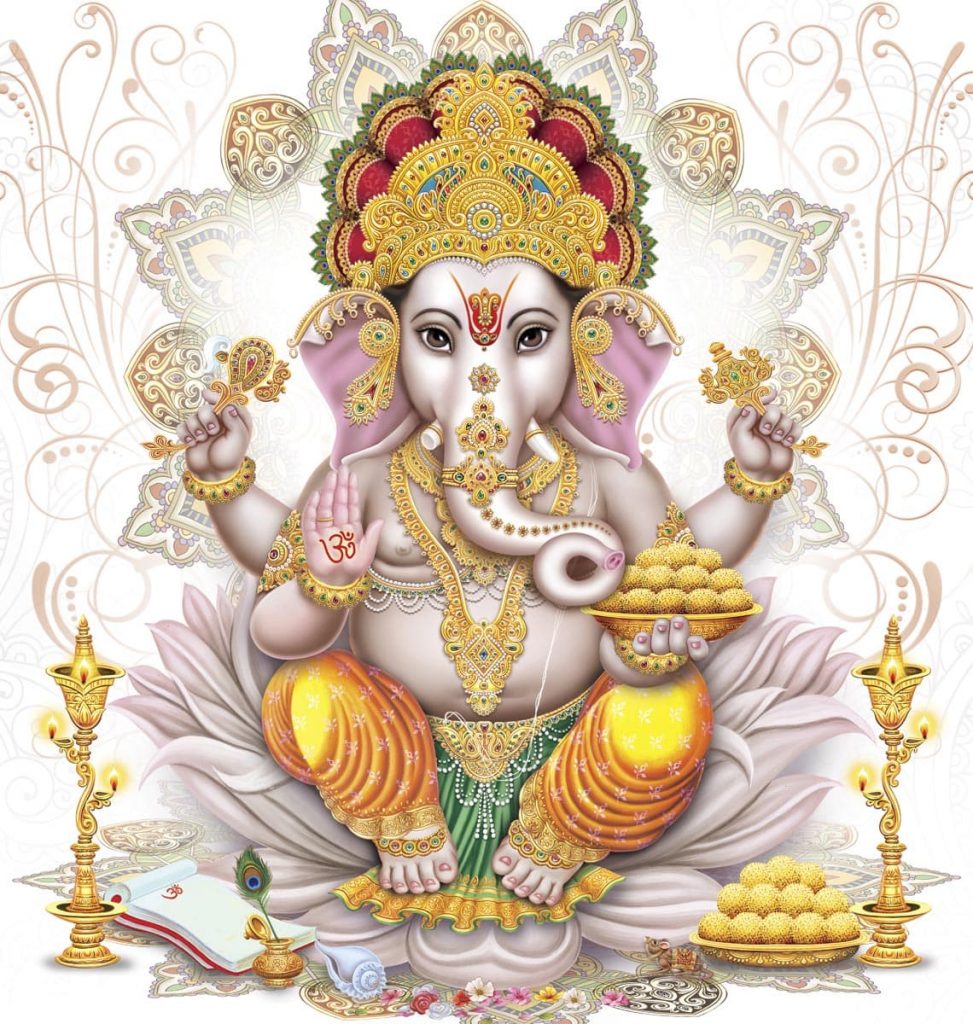

Suryaism: Suryaites, or Sauras, worship the solar Deity, Lord Surya, as God. While sun worship has been present in India since the time of the Rig Veda, the most important Saura text, the Saura Samhita, was written in 941ce. Temples to Surya—built from 800 to 1000ce—can be found across North India, though many were destroyed by Muslim invaders. With decimation of temples and the killing of priests and followers, the Surya tradition declined in the 12th century. Elements of the tradition have survived and are practiced to this day, notably the important Chhath puja, celebrated in West Bengal, Uttar Pradesh, Jharkhand and southern Nepal, in which prayers and austerities are offered to Surya over a four-day period.
Kaumaram: Followers of the Kaumaram faith are found most commonly in South India and Sri Lanka. Kaumaras worship Lord Murugan as the Supreme Godhead, superior to even Siva, Shakti and Vishnu. Historically, the tradition came to prominence when it was recognized by Adi Shankara, who incorporated Lord Kumara into his six-sect theological system, along with the Deity of five other faiths, placing each on the Smarta home altar. Thus the renowned proponent of Advaita Vedanta strove to unify the various streams of worship under a single banner.


Bali Hinduism: Widespread Hindu presence in Indonesia can be traced back to 78ce on the island of Java. As a result of Muslim invasions around 1400, Hindus were forced to consolidate in an area they could defend. Many Javanese Hindus fled to Bali, resulting in the development of Bali Hinduism. Known locally as “Agama Hindu Dharma,” it is a fusion of Indian Hinduism with indigenous Indonesian animist customs. Bali’s four million Hindus worship many Deities, including Ganesha and Acintya Siva, the Supreme Being, who is celebrated in wayang (shadow puppet) theater. He is the creator of Gods, Goddesses and all of existence.
Dattatreya Sampradaya: Followers of this sect consider Dattatreya, or Adinath, to be the Supreme Reality and Creator, the merger of Brahma, Vishnu and Siva. He is depicted as a sannyasin pursuing a simple life who achieves Self-Realization by observing nature. Followers are primarily found in Maharashtra, Karnataka, Goa, Telangana, Gujarat, Madhya Pradesh, Rajasthan and Uttarakhand. Many traditions have ties to the Dattatreya lineage, including the Natha sampradaya, Avadhuta sampradaya, Gurucharita tradition and various bhakti traditions.
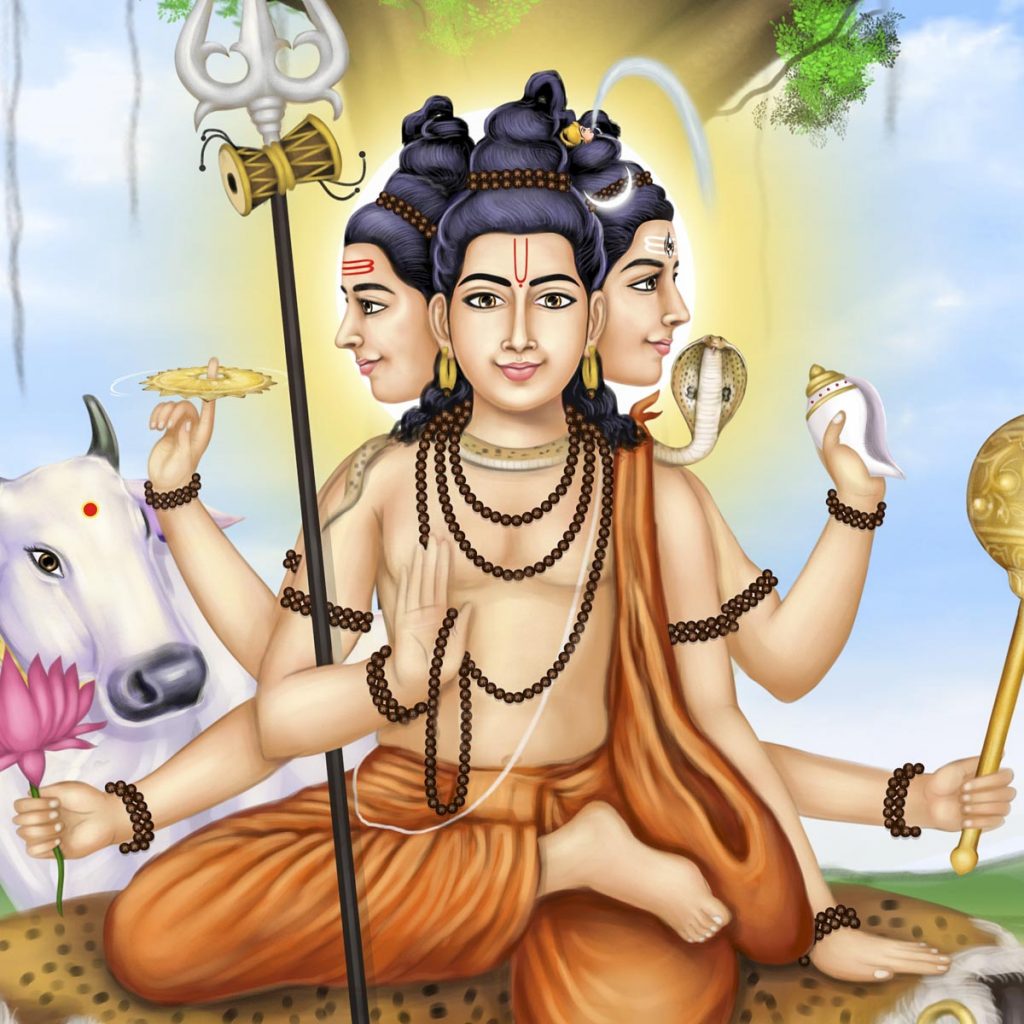

Congratulations to all the Hindu brothers who carried out this wonderful explanatory work.
OM namah Shivaya.
Pingback: Hindu Mythology: The Legends, Culture, Deities, and Heroes | History Cooperative